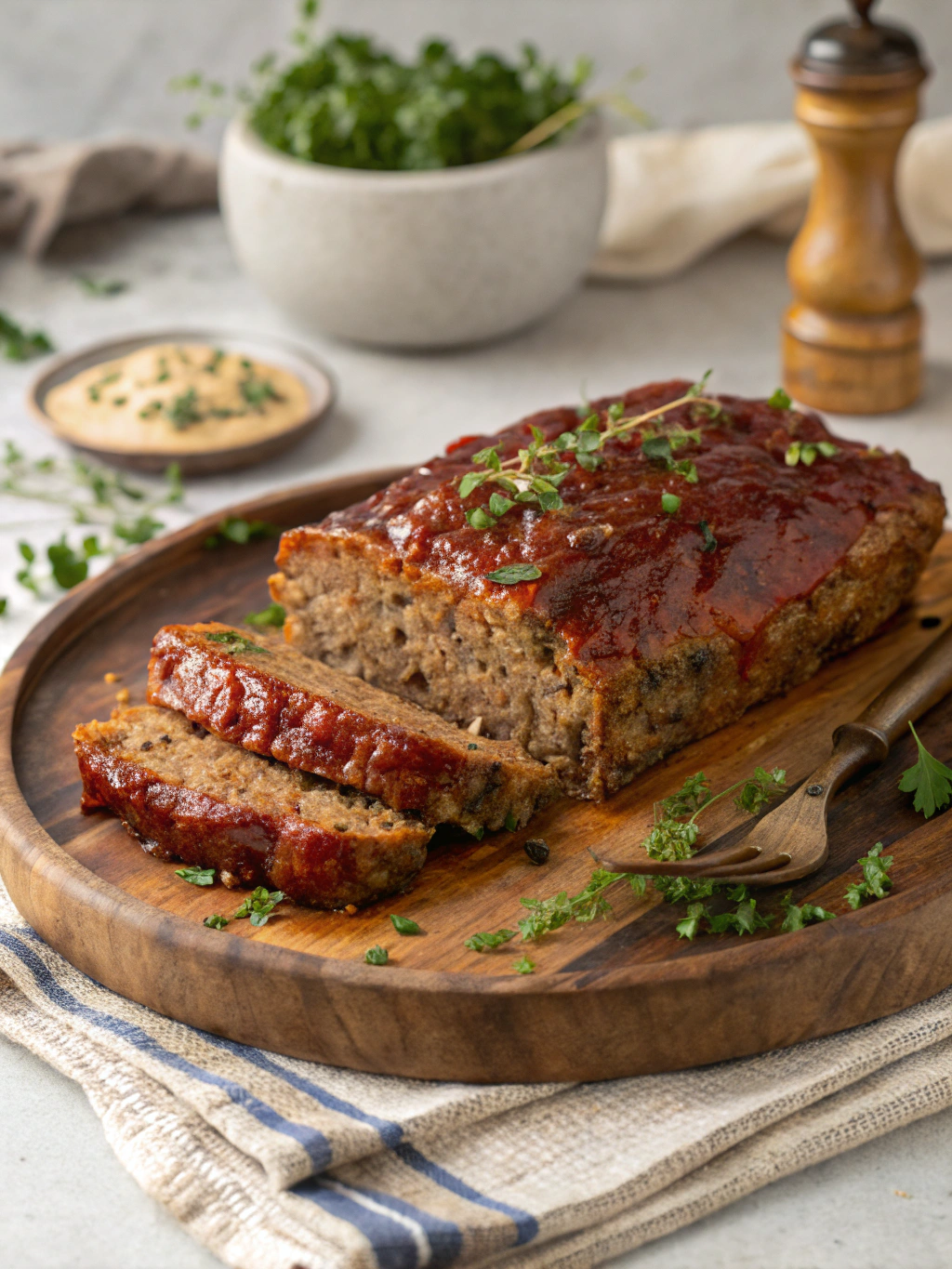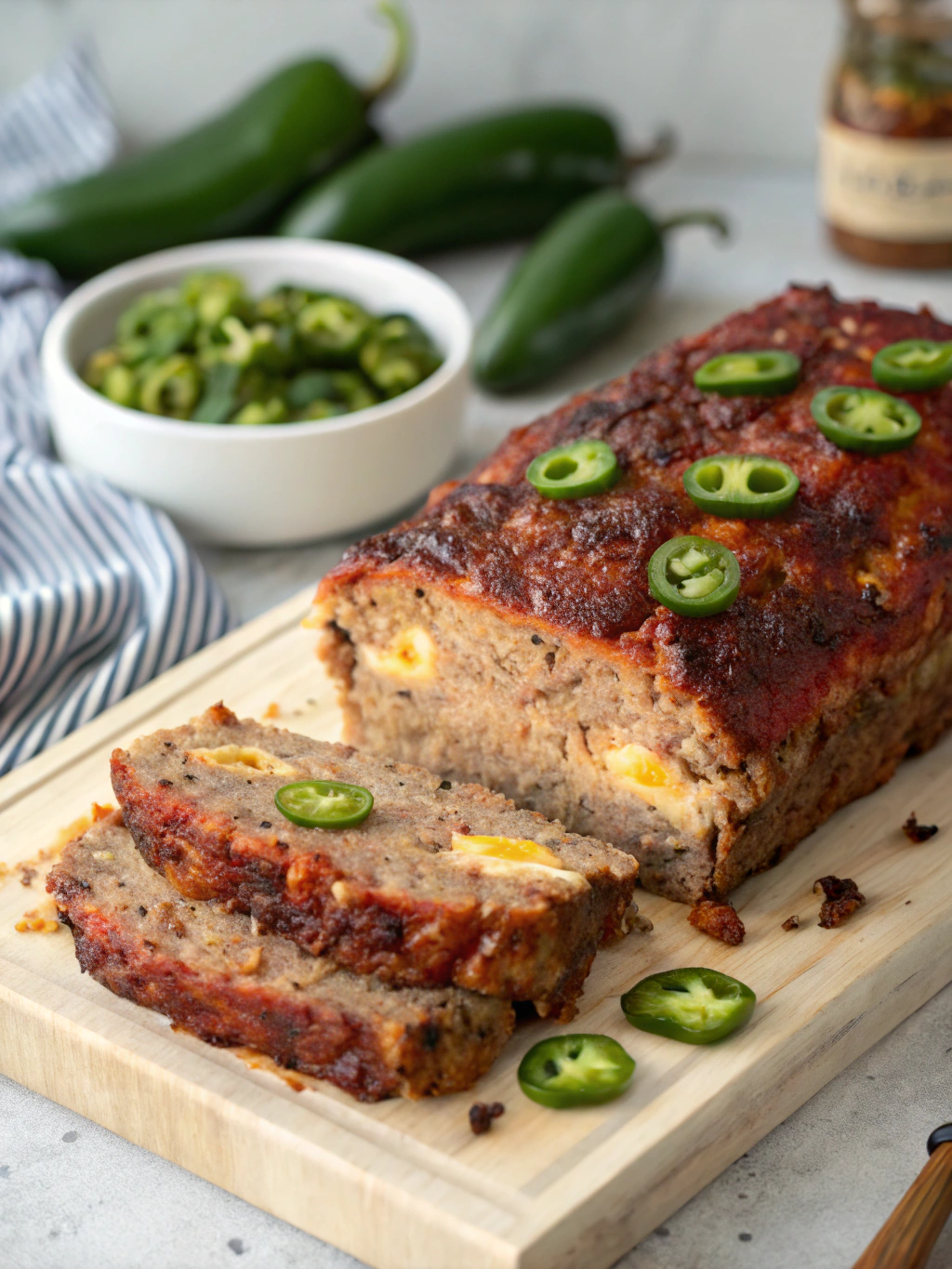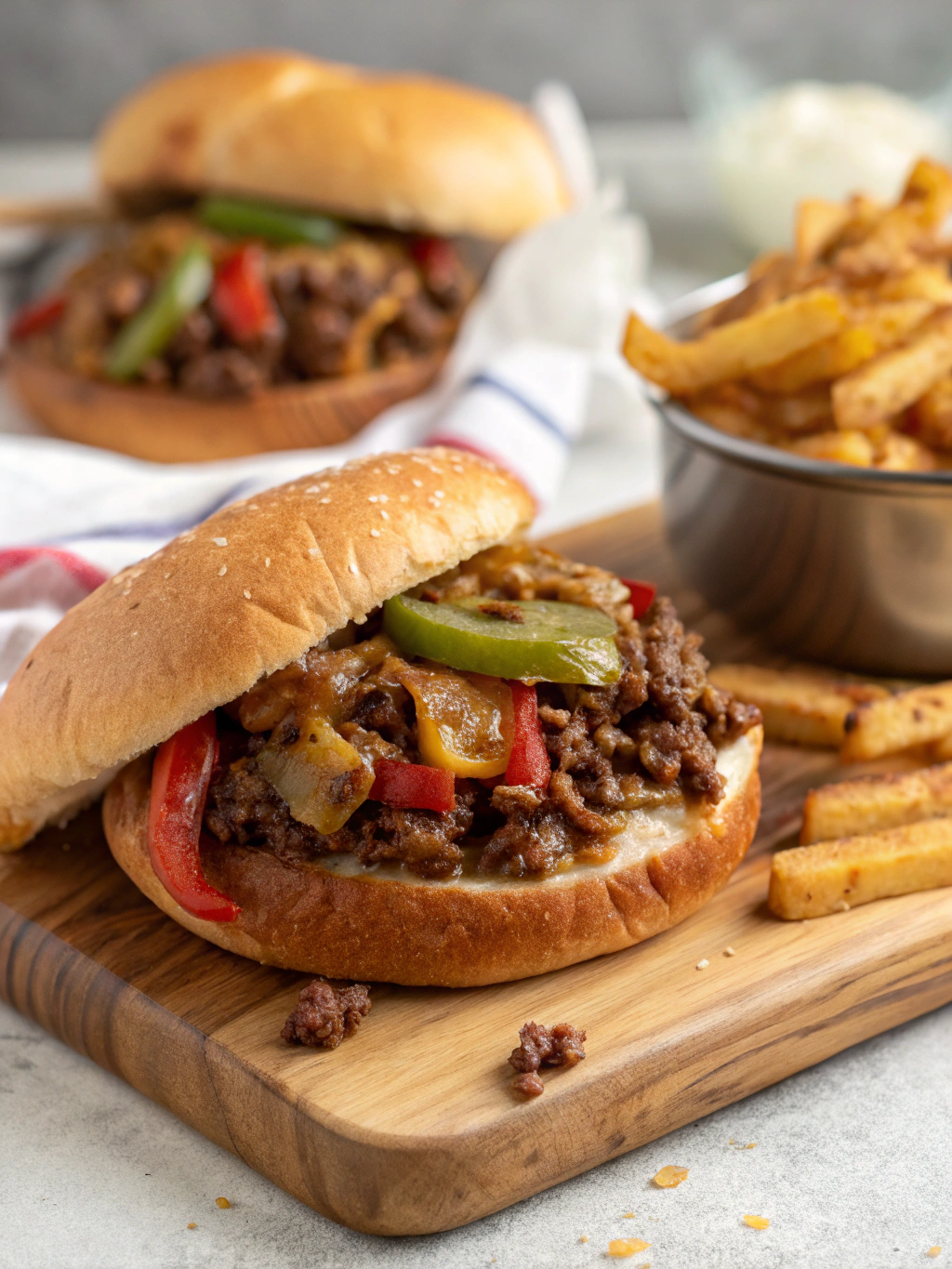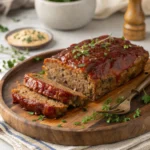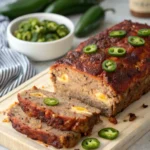Last Updated on April 17, 2025 by recipeinspire
Table of Contents
Filipino Pandesal Bread: A Staple Delight in Every Filipino Home
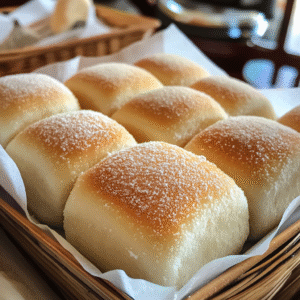
Filipino pandesal is a beloved bread roll that brings warmth to breakfast tables across the Philippines. With its soft, fluffy texture and slightly sweet flavor, this classic bread can be enjoyed on its own or paired with a variety of delicious fillings. It is not just a staple food; it holds a special place in Filipino culture and tradition.
The history of pandesal traces back to the Spanish colonial era, making it a symbol of the country’s rich culinary heritage. Made with simple ingredients like flour, yeast, and sugar, the process of creating these delightful rolls is straightforward yet rewarding. As more people discover this delightful bread, various adaptations and serving suggestions continue to emerge, making pandesal a versatile option for any meal.
Whether enjoyed fresh from the oven or toasted for an added crunch, pandesal offers a taste of home for many. Readers will find that this delightful bread is more than just food; it represents comfort and community in Filipino life.
Key Takeaways
- Pandesal is a soft, slightly sweet bread roll popular in the Philippines.
- The bread has roots in Spanish colonial history and has evolved over time.
- This versatile bread can be served with various fillings or enjoyed plain.
History of Filipino Pandesal
Pandesal has deep roots in Filipino culture and history. Its evolution reflects both local influences and historical changes that shaped the Philippines. Understanding its origins and cultural significance reveals why this bread is cherished in Filipino households.
Origins and Evolution
The history of pandesal traces back to the Spanish colonial period. The precursor to pandesal was pan de suelo, a bread made from wheat flour and baked directly on the floor of wood-fired ovens called pugón. This method created a harder and crustier bread compared to the softer texture of modern pandesal.
As wheat was not native to the Philippines, bakers began to use more affordable flour. Over time, this adaptation made pandesal more accessible to Filipinos. It transformed into a soft, rounded roll, distinct in texture and flavor. By the early 1900s, it became a regular part of Filipino breakfast alongside beverages like coffee.
Cultural Significance
Pandesal holds a special place in Filipino culture. It is often served at breakfast, enjoyed plain or with various fillings. Common pairs include cheese, butter, and jam. Many Filipinos reminisce about dipping it into coffee or hot chocolate, making it a nostalgic food choice.
During celebrations and gatherings, pandesal plays a prominent role. It symbolizes community and sharing. The bread has become a comfort food, representing Filipino hospitality. Its continued popularity shows how deeply embedded it is in daily life and cultural practices, bridging generations through shared meals and memories.
Traditional Ingredients
The traditional ingredients for Filipino Pandesal bread play a crucial role in defining its soft and fluffy texture. These ingredients include various types of flour, leavening agents, and flavorings, each contributing to the bread’s characteristic taste and quality.
Flour Types Used
The main ingredient in pandesal is flour, with all-purpose flour being the most commonly used. This flour provides a good balance of protein and starch, allowing for a light, airy texture. Some recipes also incorporate bread flour, which has a higher protein content.
Using bread flour can result in a slightly chewier texture due to the increased gluten. In regions where pandan leaves are available, some bakers include a small amount of rice flour for added flavor and a unique twist. This combination of flours helps achieve the perfect pandesal.
Yeast and Leavening Agents
Yeast is essential for making pandesal rise and achieve its signature fluffiness. Typically, active dry yeast or instant yeast is used. The yeast ferments, creating carbon dioxide bubbles that expand during baking. The process begins by activating the yeast in warm liquids along with sugar, which serves as food for the yeast.
A common leavening agent, baking powder, is not typically used in traditional recipes, as the yeast alone provides sufficient rise. Proper proofing time is also critical, allowing the dough to rise adequately before baking. This ensures a light and airy bread that is a staple in Filipino households.
Additional Flavorings
Pandesal can be enhanced with various flavorings to elevate its taste. The base ingredients usually include sugar and salt, which balance sweetness and enhance flavor.
In some households, bakers add milk or butter, giving the bread a richer taste and a softer texture. Eggs are sometimes included, contributing to a golden color and additional moisture.
Some variations even incorporate sesame seeds sprinkled on top before baking for an extra crunch. These ingredients make pandesal not only delicious but versatile, allowing it to pair well with a variety of spreads and toppings.
Pandesal Making Process
The process of making pandesal involves specific techniques at each stage, from kneading the dough to baking. These steps are essential for achieving the ideal soft texture and golden color.
Kneading Techniques
Kneading is crucial for developing gluten, which gives pandesal its structure. She should start with the initial ingredients like flour, sugar, salt, and yeast mixed in a bowl.
Once combined, they can transfer the dough to a lightly floured surface. Kneading should take about 8 to 10 minutes. The goal is to create a smooth, elastic dough. When it becomes springy and no longer sticks to the hands, it’s ready for the next step. If unsure, they should knead for a few extra minutes to ensure proper dough development.
Shaping and Scoring
After the dough has risen, it is ready to be shaped. The dough should be divided into small equal portions, usually about 25 to 28 pieces. Each portion must be rolled into a ball and then coated in breadcrumbs.
The balls should be placed on a greased baking sheet with sufficient space between each. Covering them with a cloth allows them to rise for 40 minutes. Scoring can be done before baking, making shallow cuts in the dough for a traditional look and texture that enhances the bread’s visual appeal.
Baking Times and Temperatures
Baking pandesal requires precision in time and temperature. Preheat the oven to 375 degrees Fahrenheit for about 10 minutes before placing the dough inside.
The rolls need to bake for approximately 15 to 20 minutes or until they’ve turned a golden brown. Monitoring the baking closely ensures they do not overbake. Once removed from the oven, allowing the rolls to cool slightly will enhance their flavor and texture before serving.
Variations of Pandesal
Pandesal comes in many forms, reflecting regional tastes and modern creativity. From traditional recipes that differ across areas to innovative fillings, these variations make pandesal a beloved treat in many households.
Regional Varieties
Different regions in the Philippines have their unique takes on pandesal. In Luzon, for example, some bakeries include milk or butter for a softer texture. In contrast, regions like Visayas might use a slightly sweeter dough, appealing to local palates.
Mindanao, some bakers add a hint of coconut or even combine it with local spices. These regional differences highlight the diverse culinary landscape of the Philippines. As each area puts its spin on pandesal, it showcases local ingredients and traditions.
Modern Twists and Fillings
Modern versions of pandesal often incorporate various fillings and flavors. Bakers experiment with ingredients like cheese, chocolate, or even ube, a purple yam that has become popular in many Filipino desserts.
Some creative takes include savory options like ham and cheese or spicy fillings, making it a versatile choice for meals. The addition of gourmet toppings, such as garlic butter or herbs, further elevates the classic pandesal.
These modern twists keep pandesal relevant, allowing it to evolve while still retaining its traditional roots.
Serving Suggestions
Pandesal is a versatile bread that can be enjoyed in many ways. It pairs well with both traditional Filipino dishes and modern favorites. Here are some ideas to enjoy this delightful bread.
Traditional Pairings
Pandesal is often served with classic Filipino spreads and fillings. Here are a few popular options:
- Butter and Sugar: This simple combination enhances the bread’s softness and adds a touch of sweetness.
- Kaya Jam: A coconut and pandan jam that adds a rich and flavorful twist.
- Cheese: Cheddar or processed cheese fits perfectly with pandesal, making a savory snack or breakfast option.
- Adobo: Shredded chicken or pork adobo works as a filling for a hearty meal on the go.
These pairings celebrate the traditional flavors of Filipino cuisine while complementing the soft texture of pandesal.
Contemporary Serving Ideas
In modern settings, pandesal’s versatility shines through with creative serving ideas. Some options include:
- Breakfast Sandwich: Fill pandesal with eggs and bacon for a quick and satisfying breakfast.
- Avocado Toast: Spread ripe avocado on warm pandesal for a healthy, trendy twist.
- Mini Sliders: Use pandesal as buns for sliders filled with your choice of beef, chicken, or veggies.
- Nutella or Jam: For a sweet treat, spread Nutella or fruit jam inside for dessert.
These contemporary ideas showcase how pandesal can fit into various meals and snacks, appealing to different tastes and lifestyles.
Frequently Asked Questions
This section addresses common questions about Filipino pandesal bread, including its ingredients, preparation steps, and special characteristics. Understanding these aspects can enhance the experience of making and enjoying this beloved bread.
What are the essential ingredients for making traditional pandesal?
The main ingredients for traditional pandesal include flour, water, sugar, salt, yeast, and butter. Some recipes may also incorporate milk or eggs for added richness. Yeast is crucial as it helps the dough rise and gives pandesal its fluffy texture.
What are the steps involved in preparing homemade pandesal?
Preparing homemade pandesal involves several key steps. First, one must activate the yeast in warm water with sugar. Next, mix flour, salt, and melted butter, then combine with the yeast mixture. After kneading the dough, it should rise until double in size. Finally, shape the dough into rolls and bake until golden.
Can you share an easy recipe for beginners to bake pandesal?
An easy pandesal recipe for beginners includes mixing 4 cups of flour, 1 cup of warm water, 2 tablespoons of sugar, 1 teaspoon of salt, and 2 teaspoons of yeast. After letting the dough rise, shape it into balls, coat them with breadcrumbs, and bake at 375°F for about 15-20 minutes.
What are typical pairings and accompaniments for pandesal?
Pandesal is often enjoyed with spreads such as butter, cheese, or jams. It is also perfect for dipping into coffee or hot chocolate. Some may use pandesal to make sandwiches with various fillings, enhancing its versatility.
What distinct flavors should one expect when tasting pandesal?
Tasting pandesal reveals a balance of sweetness and a slight saltiness. The bread has a soft, fluffy texture with a warm, buttery flavor. Freshly baked pandesal offers a comforting aroma that adds to its appeal.
Why is pandesal considered a beloved bread in the Philippines?
Pandesal is cherished in the Philippines for its delightful taste and texture. It is commonly enjoyed during breakfast and as a snack. Its simplicity and adaptability make it a staple in many Filipino households, often evoking fond memories of family meals.
Print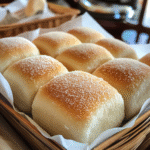
Filipino Pandesal Bread
Description
Filipino pandesal is a beloved bread roll that brings warmth to breakfast tables across the Philippines. With its soft, fluffy texture and slightly sweet flavor, this classic bread can be enjoyed on its own or paired with a variety of delicious fillings.
Ingredients
All-purpose flour (4 cups)
Sugar (1/2 cup)
Salt (1 tsp)
Active dry yeast (2 1/4 tsp)
Warm water (1 1/4 cups)
Vegetable oil (1/4 cup)
Bread crumbs (for coating)
Instructions
In a bowl, mix warm water, sugar, and yeast. Let it sit for 10 minutes.
Add flour, salt, and vegetable oil to the yeast mixture. Knead until smooth.
Cover the dough and let it rise for 1 hour.
Preheat the oven to 350°F (175°C).
Shape the dough into small balls, roll them in bread crumbs, and place on a baking sheet.
Let the dough balls rise for another 30 minutes.
Bake for 20 minutes or until golden brown.
More Recipe:


